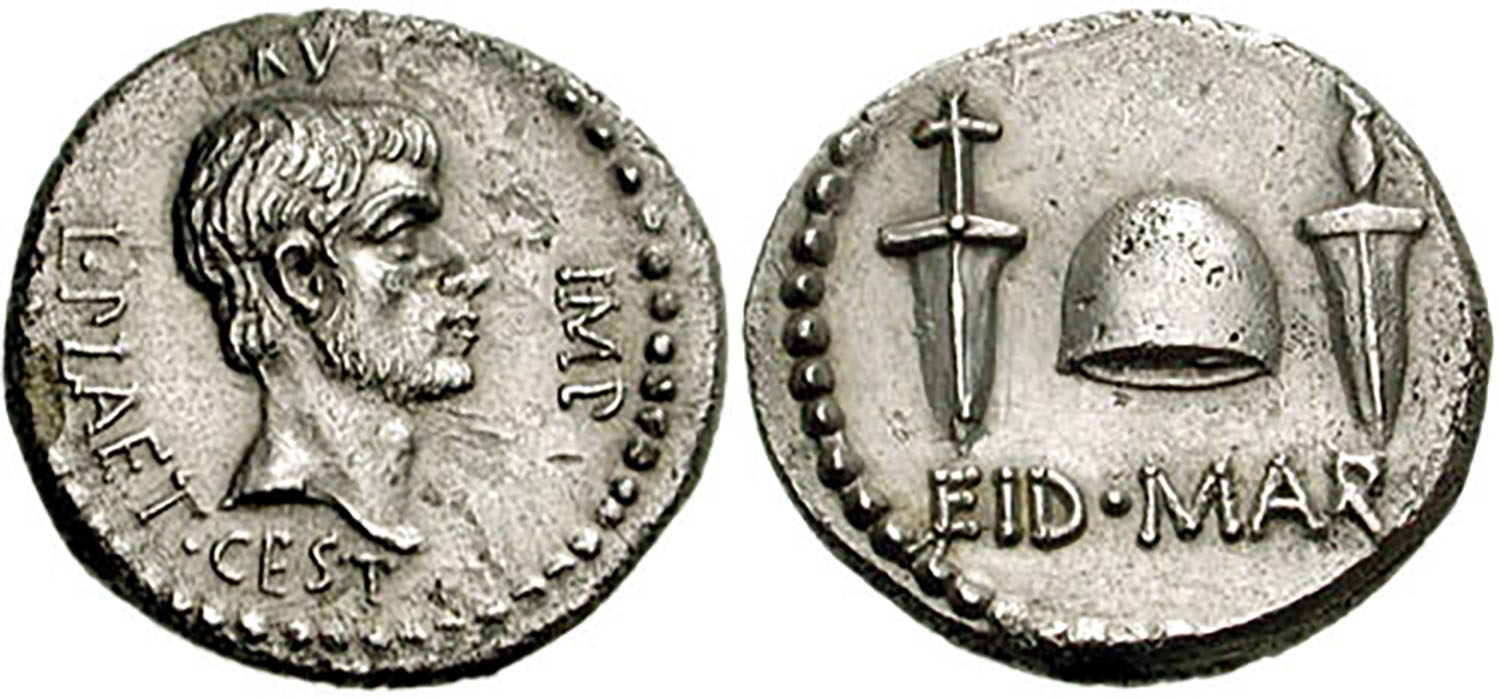Brutus Denarius and the Ides of March
The Brutus Denarius And the Ides of March
For centuries, March 15th, known to the Romans as the Ides of March, was an unlucky date. You might wonder why. It’s because that’s the day the great Roman general Julius Caesar was assassinated.
As the story goes, Caesar and his number two Marc Antony were on there way to the senate in Pompey’s Forum. The conspirators stop Antony outside the Senate and distract him while Caesar enters the building. Then the Roman senators attack and kill Caesar with daggers. He was stabbed twenty-three times! But, only a few of the stab wounds were actually fatal.


One of the most famous conspirators was Marcus Junius Brutus. Brutus and Caesar had a complicated history. At one point, Brutus served under Caesar’s command only to turn against Caesar in the first Roman Civil War. After Caesar won the Civil War he pardoned Brutus and welcomed him back into the leadership of Rome. So, it was a particularly hard blow (pun intended) for Caesar to realize that Brutus was stabbing him too.
At this point, you are probably thinking of the famous line from Shakespeare, “Et tu, Brute?”, which means, “and you, Brutus?” and is used in common language today as a declaration of betrayal. But did Caesar really say that? Nope. Some ancient accounts report he said, “And you my child” in Greek which could have meant any number of things, from being betrayed to cursing Brutus that he will find the same fate. It’s just not really clear.
What is clear, is that after the assassination, Brutus and his co-conspirators were hunted down and made to pay for their crimes.
Our craft for the Ides of March is the famous Brutus Denarius. It is a coin minted by Brutus after the assassination of Julius Caesar in 44 B.C.

As you can see, the coin has a picture of Brutus’ likeness on its head and a freedom cap and two daggers on its tail. The freedom cap was worn by freedmen of the Roman Empire and on the coin was representative of the liberation of Rome. The two daggers represent the daggers used to kill Caesar. (As a bonus, print out this PDF version of the coin and color it in.)
Brutus used this coin to pay his troops during the second Roman Civil war, which he lost at the battle of Philippi. He fought against Marc Antony and Octavian (Caesar’s adopted nephew). Brutus fell on his own sword, rather than face capture. The Brutus Denarius is considered to be the one greatest ancient coins ever minted.

Supplies:
- Air Dry Clay
- Black Paint (metallic works great)
- Silver Paint
- Carving Tools or Toothpicks
- Paint Brush
Directions
- Roll out the clay in the shape of a coin, make it as big or small as you like. If you make it a little larger it will be easier to carve. You might even make a few sizes and see which you like best.
- Use the photos of the coin on this page to carve the front and back of your coin. Do your best. The faces can be kind of difficult.
- Let the coin dry.
- Paint the coin black all over. Make sure to get the black paint in all the tiny nooks.
- Let it dry. This should be pretty quick unless you used a LOT of paint.
- Lightly apply a thin layer of silver paint.
You are done! Go pay the legions with your Brutus Denarius.



